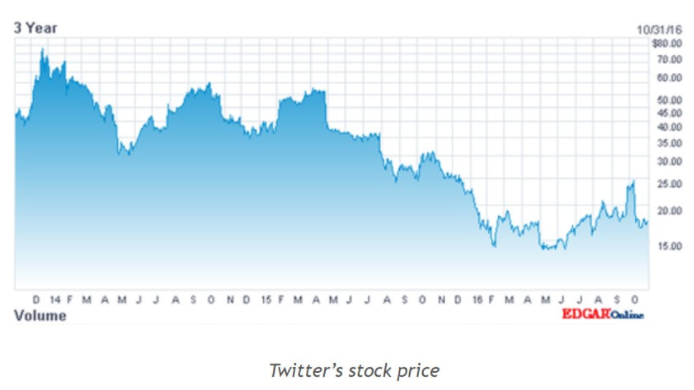|
In October, Twitter announced that it would be shutting down Vine — its app for creating six-second looping videos. Twitter also revealed that it would be laying off roughly 9% of its workforce. This all came on the heels of Twitter’s failed attempts to be acquired despite reported interest from companies such as Disney, Google, and Salesforce. Twitter has now announced that as of January 17th, the Vine app will be rebranded as Vine Camera. In its new incarnation, the app will be a simple tool for creating looping videos that can be posted on Twitter. When Vine launched in 2012, there were fewer tools and platforms for content creators. Vine brought a new medium for humor to the market, and it did fairly well for a while. At its peak in 2014, Vine was used at least once a month by 3.64% of all Android mobile users in the U.S., including heavy use by notoriously hard-to-reach millennials. Despite the rosy facade, however, it’s now clear that Vine was essentially doomed from the start. Since its early acquisition by Twitter, Vine was run with the same lack of focus that has plagued the struggling social media giant and caused its stock price to fall steadily. The very diversity of Twitter’s alleged suitors should help illustrate how unfocused Twitter has been. Twitter has never been clear about who its target market is or what the site is meant to be used for. It has been a platform for individuals to share personal content and stay abreast of news, for entrepreneurs to raise awareness about themselves, and for media companies to share their own video content, among many other uses. It has tried to be all things to all people. Unfortunately, the one-size-fits-all model almost always satisfies no one. When people choose to buy a product or use a service, they do so because it’s the best option out there for getting something done in their lives. In Jobs to be Done language, we say that they “hire” a solution to get a “job” done. Because Twitter has spread itself thin in trying to do so many jobs for so many different people, there’s almost always a better tool for getting any one job done. As a result, Twitter’s users have left for those other tools that truly excel at getting important jobs done. For example, they may use LinkedIn to showcase their professional brand, Flipboard to curate their news, and Facebook to share funny content with close friends. Despite having a concrete vision early on, Vine has suffered from the same lack of strategy that Twitter has demonstrated. Vine’s founders originally pitched it as a lifecasting app — a tool to help people capture and share moments. But Twitter never led it in that direction. Rather than determining whether there was a specific segment of the market that was struggling to find the right product to hire to do a job related to capturing and sharing moments, Twitter offered Vine as just another way of creating entertainment on the Internet. That’s a crowded space to play in. Moreover, left without guidance, the world co-opted Vine to become a self-referential tool. Vines became a means for sharing inside jokes about older vines. That kind of product doesn’t lend itself well to broadening a customer base, yet Twitter took no action to rethink the product. Meanwhile, the competition was helping important segments of Vine’s customer base get specific jobs done. Instagram focused on helping emerging celebrities promote themselves. To satisfy that job, it offered the ability to make longer videos — celebrities found it hard to be funny in six seconds — and an “explore” tab that made it easier for them to get discovered. Soon after, Snapchat entered the scene and focused on helping customers satisfy their job around life logging — the idea Vine’s founders pitched at the outset. Snapchat eliminated traditional editing features from its product to help ensure that the moments shared were closer to real life, and it stole another huge chunk of the market that had been under-satisfied in that regard. With Vine still not satisfying a specific job for any discernible group, it was left without a loyal user base. Companies can certainly offer more than one product and help customers satisfy more than one job. But they need to be clear about why each offering is the best way for specific customer types to get their jobs done. Vine didn’t do that. It introduced a fun new piece of technology, saw some initial interest, and faded into disuse. With Vine Camera, the looping video technology will live on while the rest of Vine’s assets shift into archive mode. Twitter needs to identify the jobs it’s going to help people get done, or it’s going to meet the same fate. Killing off Vine may have been a positive step in that direction. With fewer distractions to worry about, perhaps Twitter can decide what its core business really is. Dave Farber is a strategy and innovation consultant at New Markets Advisors. He helps companies understand customer needs, build innovation capabilities, and develop plans for growth. He is a co-author of the award-winning book Jobs to be Done: A Roadmap for Customer-Centered Innovation. Comments are closed.
|




1/23/2017